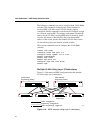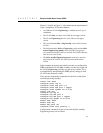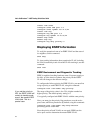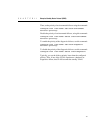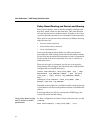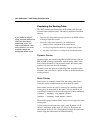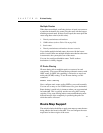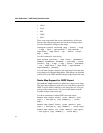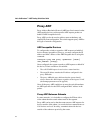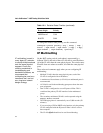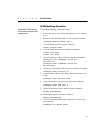
192
Intel
®
NetStructure™ 480T Routing Switch User Guide
Populating the Routing Table
The 480T routing switch maintains an IP routing table for both
network routes and host routes. The table is populated from these
sources:
If you define a default
route, and later delete the
VLAN on the subnet
associated with it, the
now-invalid default route
entry remains. You must
manually delete the
configured default route.
• Dynamically, using routing protocol packets or by ICMP redirects
exchanged with other routers
• Statically, using routes entered by the administrator:
• Default routes, configured by the administrator
• Locally, using interface addresses assigned to the system
• By other static routes, as configured by the administrator
Dynamic Routes
Dynamic routes are learned using RIP or OSPF. Routers that use
RIP or OSPF exchange information in their routing tables in the
form of advertisements. Using dynamic routes, the routing table
contains only networks that are reachable.
Dynamic routes are aged out of the table when an update for the
network is not received for a period of time, as determined by the
routing protocol.
Static Routes
Static routes are manually entered into the routing table. Static
routes are used to reach networks not advertised by routers.
Static routes can also be used for security, by controlling which
routes you want advertised by the router. You can decide if you
want all static routes to be advertised, using one of these commands:
[enable | disable] rip export static
[enable | disable] ospf export static
The default setting is enabled. Static routes are never aged out of the
routing table.
A static route must be associated with a valid IP subnet. An IP
subnet is associated with a single VLAN by its IP address and
subnet mask. If the VLAN is subsequently deleted, the static route
entries using that subnet must be deleted manually.



